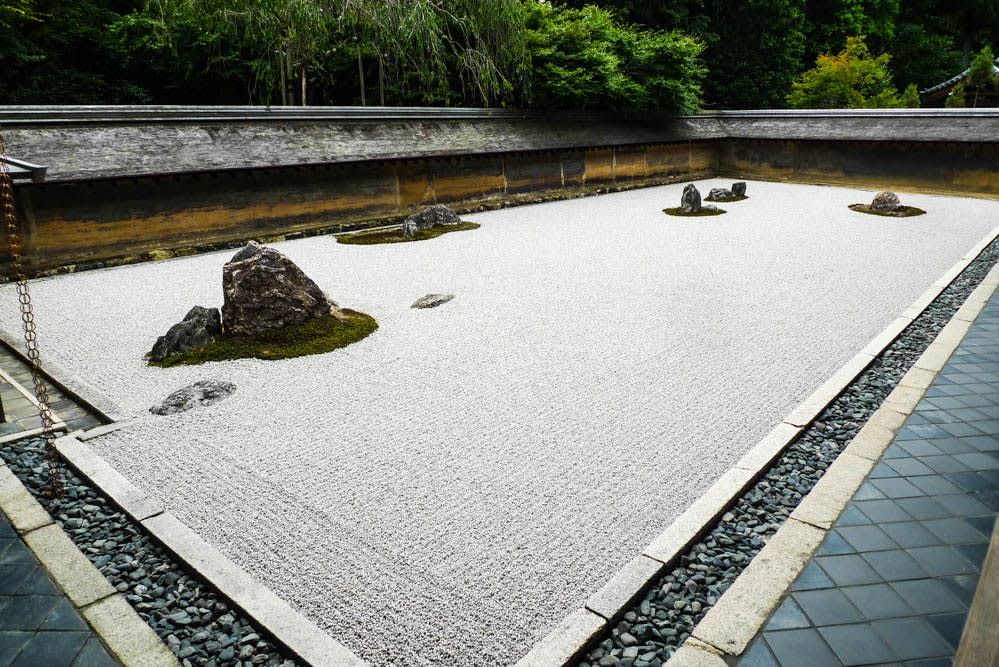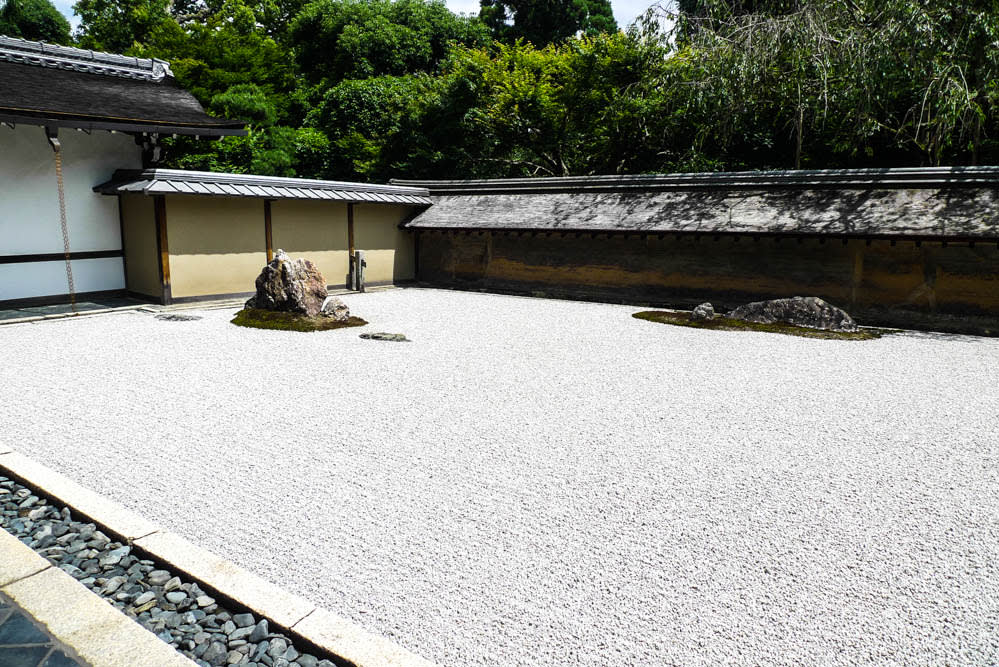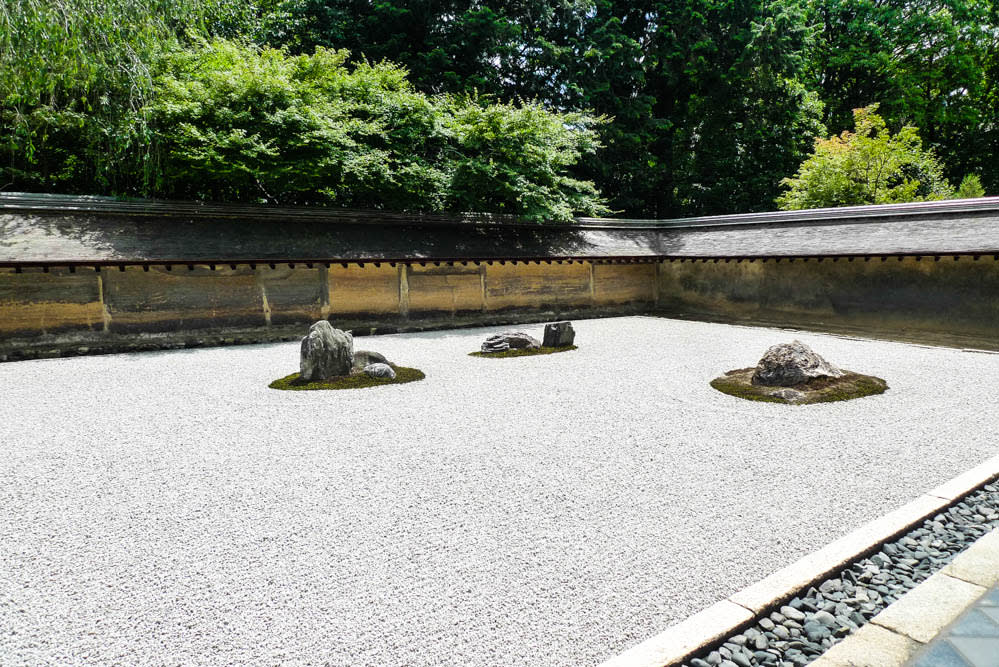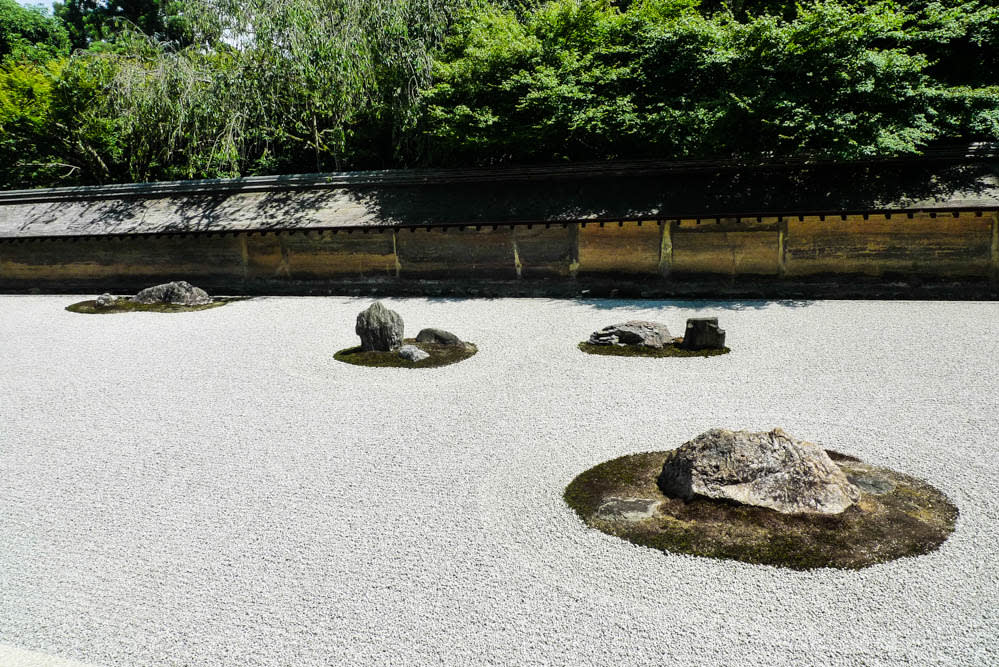
Wabi-sabi is a world view in Japanese aesthetics including architecture, fashion, art, etc. Its central point is the acceptance of imperfection and transience. I had a chance to experience the concept used in landscaping when visiting zen gardens in Kyoto in 2014. I have come to understand my life perspective by reflecting upon what I captured in photos.
Ryoanji
During my trip to Japan in June 2014, of 9 days, I stayed in Kyoto for 5 days, most of which I spent on temple and garden hopping. Among all visited temples and zen gardens, my most memorable place is Ryoanji and its zen garden. Though I had read about the famous zen garden before my visits to Ryoanji, being immersed in the atmosphere of the garden is still an amazing experience, which is, unfortunately, can’t be recorded fully in photos.
The garden has a rectangle shape. Within it, there are 15 stones of different sizes, divided into 5 groups; one group of 5 stones, two groups of 3, and two groups of 2. The base ground is covered with gravel, which is raked carefully every day by the monks. Stones lie slightly higher than the garden ground. Their surrounding area has some moss. All these stone are arranged in an interesting layout whose entire composition cannot be seen at once from the veranda. From any angle, up to only fourteen stones are visible.

The background wall of the garden contributes to its rustiness. Made of clay, it has been stained and have subtle brown and orange tones. Rustiness is a prominent factor in zen. It shifts the human focus to the content of the object, which defines the core aka the essence, instead of its appearance, which usually causes distraction.

To appreciate zen gardens or any beauty in life, it is essential that the viewer first reach a calm state of mind, when there is no distraction and noise. In this state, our mind focus can avoid the fancy appearance of the object to comprehend its character. The clay wall in Ryoanji serves this purpose well. Ryoanji will be interpreted in a completely different way if the wall is gold-covered.
From Wabi-sabi …
There are many interpretation theories around Ryoanji. My overall understanding is that we need to acquire various perspectives to see the truth, especially the complex ones. The existence of anything can be acknowledged throughout its relationship with other visible objects, not necessarily its visibility. The relationship between different subjects can be more important than themselves.
I guess the interpretation is not what matters in understanding Ryoanji. What matters more is how the garden shifts the viewer’s focus inward and reflect on themselves instead of the outer world. I believe this, indeed, is a form of meditation. Viewers need to embrace the imperfection to see through its essence. Garden historian Gunter Nitschke wrote in his book Le jar din Japonais (Japanese garden): “The garden at Ryōan-ji does not symbolize anything, or more precisely, to avoid any misunderstanding, the garden of Ryōan-ji does not symbolize, nor does it have the value of reproducing a natural beauty that one can find in the real or mythical world. I consider it to be an abstract composition of “natural” objects in space, a composition whose function is to incite meditation.”


… to Photography
Wabi-sabi has been my interest since my first trip to Japan in 2012. After reading a few books, I believe that philosophy is what I need to understand my way of life. In the context of photography, Wabi-sabi helps me explain my feeling attached to an analog medium. When I see photos with film colour tone and grain, I always have a nostalgic feeling toward it since they bring out a sense of time. It’s essential that a photo needs to go through a long development and scanning process to become a visible object is what make me attach to it so much. With digital photography, this feeling is different since we have more and faster control of the medium, and thus evidence of time is less visible.
During my travel, sometimes I wondered why I like taking photos. There were many situations in which I didn’t take any photos and just simply enjoyed the scenes. That was when I realised my camera can’t capture my state of mind and that I should treasure the view without any distraction. Ryoanji is a place where I felt that strongly.